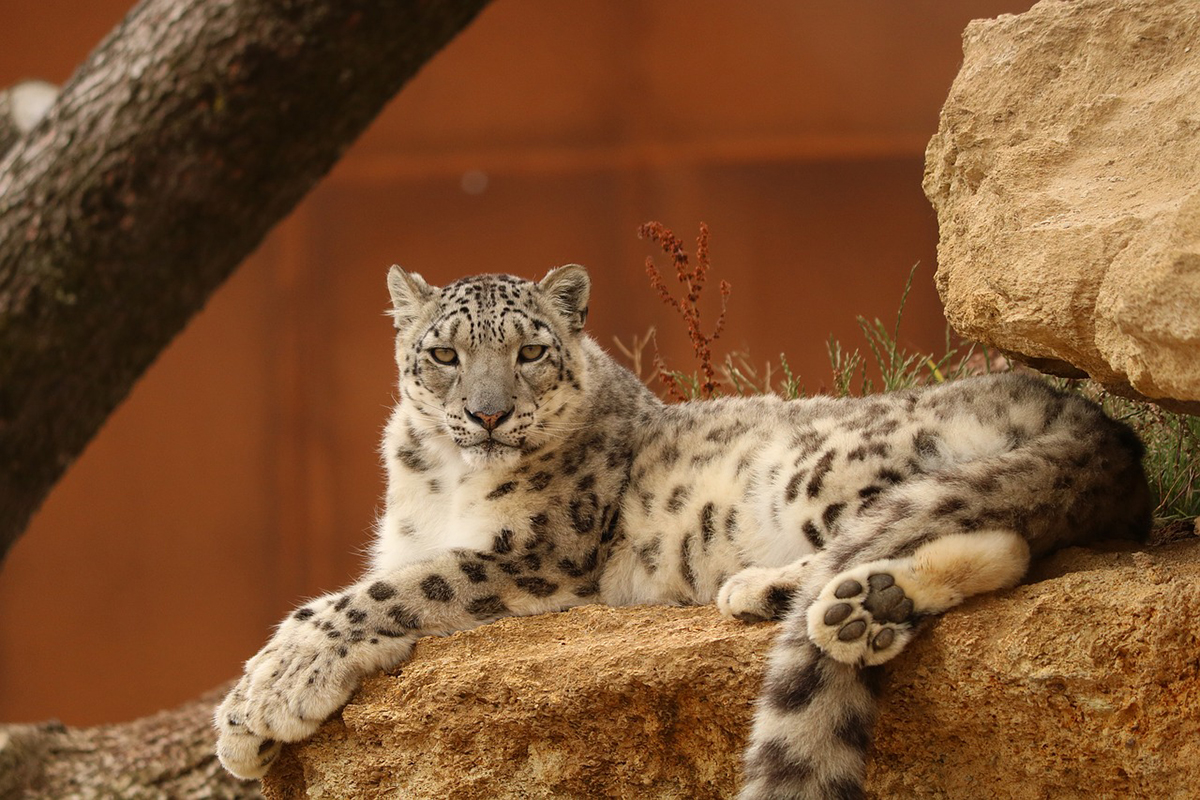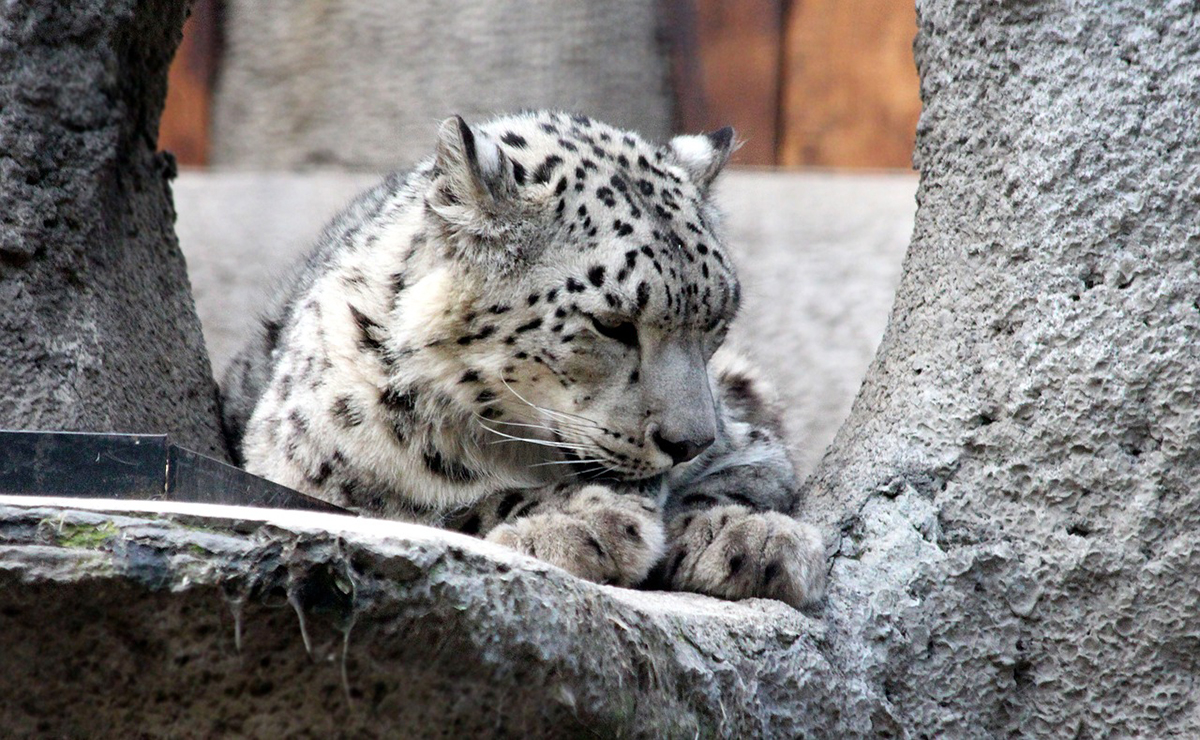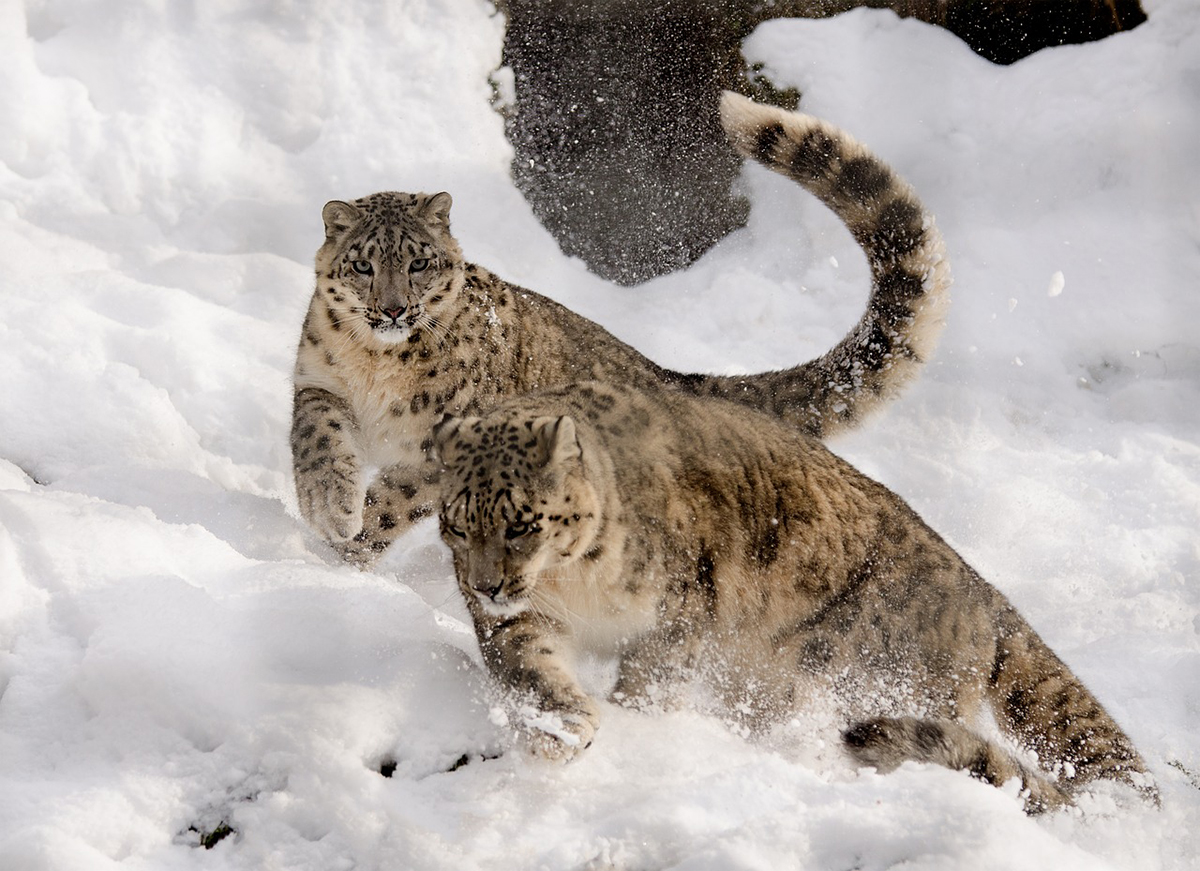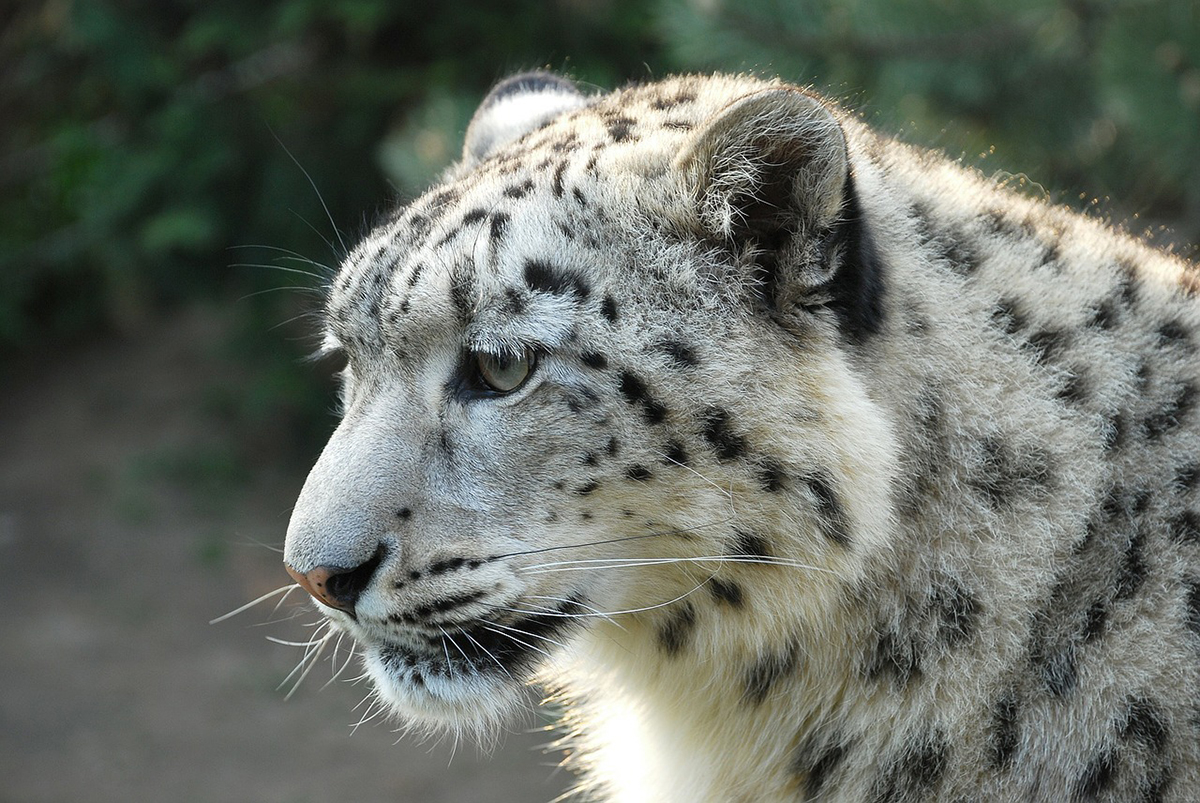
Although leopards are famous for their characteristic yellow color and black spots, there are also some that, while keeping the dark spots, have a gray color. It is the white leopard, a vulnerable and little-studied species which is rarely seen by humans.
To learn more about this curious animal, I recommend you keep reading. We will explain what the white leopard is, what is its biology and its distribution and some curiosities.
What is the white leopard?

When we talk about the white leopard, we are referring to a carnivorous mammal of the cat family. It inhabits the remote mountains of Central Asia.. Normally we can find this precious animal at altitudes of up to six thousand meters above sea level. Therefore, it is a very difficult species to see and study.
It has a very dense, soft and greyish fur that helps it survive the low temperatures of its habitat. The white leopard's tail is exceptionally long and often wraps around its body for warmth. This predator is used to hunting by day and among its prey are all kinds of animals, including cattle. On some occasions, farmers go so far as to kill these near-endangered cats. However, most concerning are hunters attempting to kill white leopards for sport or for their fur.
Today It is not known exactly how many specimens of these animals are still in the world. The World Wide Fund for Nature estimates that there will only be about four thousand individuals alive. The gestation time and the number of young that white leopards usually have also play against them. To complete the gestation period they require around one hundred days and they usually have one or two puppies per litter, being able to reach a maximum of five. From the age of two they are considered adults.
What is the name of the snow leopard?
The snow leopard, commonly known as the white leopard, is also called the irbis. ANDThe scientific name of this species is Panthera ounce and it belongs to the family Felidae, like cats. Unsurprisingly, the white leopard is named for its color. While leopards are usually yellowish, this one has shades that range from white to gray, except for its characteristic black spots. Thanks to its color, it is easier for it to blend in with nature, since its habitats are usually covered in snow.
White Leopard Biology

Now that we know a little about the white leopard, let's delve deeper into its biology. It is a predator with considerable strength, as it is capable of hunting other animals up to three times larger than itself. In addition, it should be noted that it has one of the longest jumps among all the species of cats. With a single jump it can reach fifteen meters.
Like most of the species belonging to the family Felidae, the white leopard is a solitary animal, except during the breeding season. During that period of time, both the male and the female hunt much larger prey than usual and work together to achieve it. It should also be noted that they are very territorial animals, which is why they are quite aggressive.
Among its most common prey are different types of animals, such as squirrels, goats, rabbits, shrews, marmots, etc. The white leopard not only hunts, but also feeds on already dead animals. Due to the low temperatures, they generally take a long time to decompose.
Despite what many people believe, white leopard attacks on humans are very rare. so much that only two are known so far. The first took place on July 12, 1940. In the Maloamatinsk Gorge in Almaty, an irbis attacked two people who suffered serious injuries. Near Almaty the second attack also took place. This time, a toothless old white leopard attacked a passerby, but it was unsuccessful, in fact it was captured.
Distribution of the white leopard

Generally, the white leopard lives at altitudes that range between two thousand and four thousand meters above sea level. In some places, such as the Himalayas, it has been sighted at heights that reached up to six thousand meters above sea level. Because of this, it is rare for the human and the irbis to coincide. In addition, their excellent camouflage makes it very difficult to see and study them. Thus, the information provided by naturalists is scant.
Although the white leopard is not yet endangered, Yes, it is considered a vulnerable species. Therefore, an exhaustive count of the living specimens is carried out. Next we will see the estimated population that there was in the year 2017 in the different countries:
- Afghanistan: Between 100 and 200 copies.
- Bhutan: Between 100 and 200 specimens.
- China: Between 2.000 and 2.500 copies.
- India: Between 200 and 600 copies.
- Kazakhstan: Between 180 and 200 specimens.
- Kyrgyzstan: Between 150 and 500 specimens.
- Mongolia: Between 500 and 1.000 specimens.
- Nepal: between 300 and 500 specimens.
- Pakistan: between 200 and 420 copies.
- Tajikistan: Between 190 and 220 specimens.
- Uzbekistan: Between 20 and 50 copies.
Curiosities

The beauty and rarity of this animal makes it much loved in popular culture. There is a Soviet mountaineering award called "Snow Leopard". This was granted to those people who climbed the highest peaks belonging to the Soviet Union: Khan Tengri, Pico Ismail Samani, Pico Lenin and Pico Korzhenevskaya. In 1990, Pico Pobeda, located on the border with China, was also added.
The white leopard also appears in Philip Pullman's "Dark Matters" trilogy. There, the character called Lord Asriel has an irbis as a daemon, that is, as a representation of his soul. We can also find this animal in some movies like, for example, "Kung Fu Panda," where the main villain named Tai Lung is an irbi, or "Zootopia," where a female white leopard announces the news. Another feature film where we can appreciate this animal is in "The Secret Life of Walter Mitty." There, a photojournalist named Sean O'Connell, who was played by Sean Penn, is shown taking photos of irbis in Afghanistan.
Even in the world of technology we can find references to the white leopard. An example for this is version 10.6 of Mac OS X. This Apple operating system is called "Snow Leopard", which means "snow leopard" in English.
Despite the fact that the information that exists on the white leopard is quite scarce, many things have been found out about this species. And who knows, maybe some news will be discovered soon.